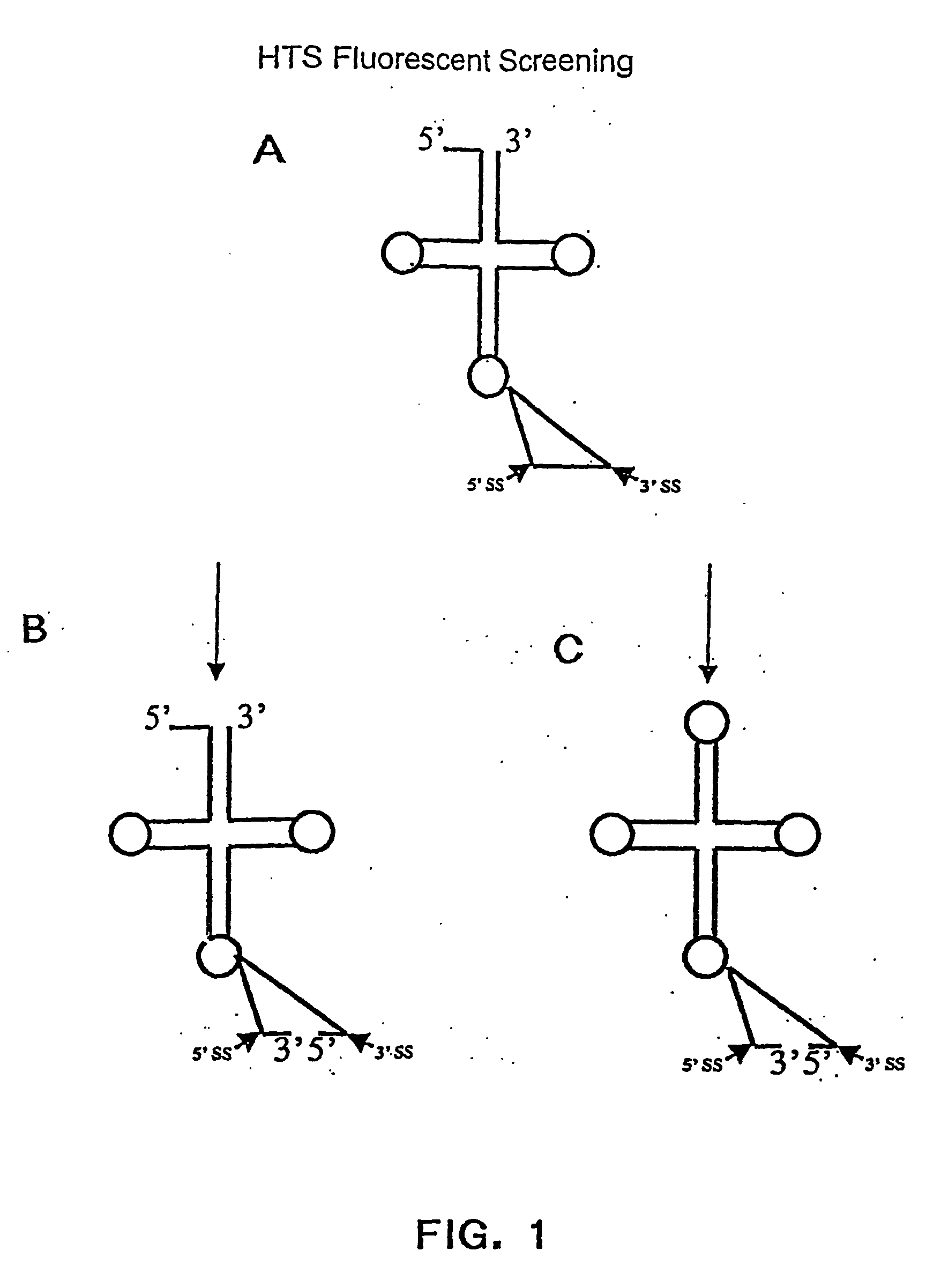Methods of identifying compounds that target trna splicing endonuclease and uses of said compounds as anti-fungal agents
a trna splicing endonuclease and compound technology, applied in the field of compound identification, can solve the problems of affecting the production of functional suppressor trna, affecting and affecting so as to inhibit or reduce the activity of a fungal trna splicing endonuclease and the effect of reducing the production of trna and reducing the expression of reporter genes
- Summary
- Abstract
- Description
- Claims
- Application Information
AI Technical Summary
Benefits of technology
Problems solved by technology
Method used
Image
Examples
Embodiment Construction
[0100] The present invention provides methods for identifying compounds that modulate fungal tRNA splicing endonuclease. In particular, the invention provides simple, rapid and sensitive methods for identifying compounds that inhibit fungal tRNA splicing endonuclease. The cell-based and cell-free assays described herein can be utilized in a high-throughput format to screen libraries of compounds to identify those compounds that inhibit fungal tRNA splicing endonuclease.
[0101] Reporter gene-based assays can be utilized to identify a compound that modulates the activity of a fungal tRNA splicing endonuclease. The reporter gene-based assays described herein may be conducted by contacting a compound with a cell genetically engineered to express a nucleic acid comprising a reporter gene, wherein said reporter gene comprises a tRNA intron, and measuring the expression of said reporter gene. Alternatively, the reporter gene-based assays may be conducted by contacting a compound with a fun...
PUM
| Property | Measurement | Unit |
|---|---|---|
| molecular weight | aaaaa | aaaaa |
| half life | aaaaa | aaaaa |
| pH | aaaaa | aaaaa |
Abstract
Description
Claims
Application Information
 Login to View More
Login to View More - R&D
- Intellectual Property
- Life Sciences
- Materials
- Tech Scout
- Unparalleled Data Quality
- Higher Quality Content
- 60% Fewer Hallucinations
Browse by: Latest US Patents, China's latest patents, Technical Efficacy Thesaurus, Application Domain, Technology Topic, Popular Technical Reports.
© 2025 PatSnap. All rights reserved.Legal|Privacy policy|Modern Slavery Act Transparency Statement|Sitemap|About US| Contact US: help@patsnap.com


